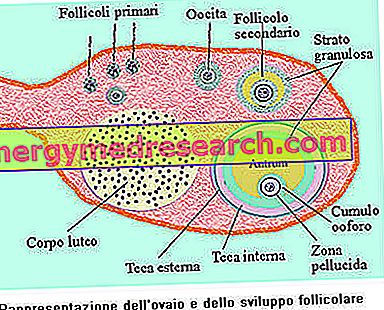What is the Bottarga
The bottarga is a preserved food of animal origin, which is one of the fishery products and is typical of the Tyrrhenian coastal areas. It is the oviparous sac (ovaries or female gonads, called "baffe") of tuna or mullet, extracted from the animal, washed, salted and seasoned. The bottarga has a characteristic structure, since traditionally it should be worked in whole form.

Although bottarga can be a typically Italian food, very similar foods are also produced abroad. In fact, the term "bottarga" seems to have Arabic roots ( batārikh - conservation in salt) and there are numerous similar preparations also in Africa, the Middle East, Spain and Greece.
The bottarga is typical of the major islands, Sardinia and Sicily, but today it is produced to a large extent also in other regions. In Sicily, the bottarga proper would be that of bluefin tuna ( Thunnus thynnus - today subjected to strict sampling regulations and almost totally replaced by yellowfin tuna - Thunnus albacares ), while in Sardinia it is widespread ALSO that of mullet ( Mugil cephalus ).
As for the legislative aspect of food, the "Bottarga, tuna egg" and the "Bottarga, Capo San Vito tuna egg, santovitaro tuna egg" have been merged into the list of "Sicilian Traditional Agri-food Products"; also in the list of "Sardinian Traditional Agri-food Products" there are the words: "Mullet bottarga, mullet bottariga" and "Tuna bottarga, tuna bottariga, tuna buttariga, buttarga de tonnu, buttarla de scampirru".
It is necessary to specify that the bottarga (Sicilian or Sardinian) has NOT yet obtained any IGP or PDO recognition, but only of "Tipicità"; therefore, similar foods are distributed in other regions of Italy (eg Tuscany and Calabria) with the generic term "Bottarga" and the "Traditional Product" specification.
At the same time, there are other types of bottarga (also found in the native regions) that do not respect the traditional processing, since they contain tuna eggs, mullet, amberjack, grouper and so on. in the form of a dried powder without the containing ovarian membrane.
Nutritional Features and Recipes
The bottarga is a very caloric food, although, given the small portion of consumption (a few grams), the relative nutritional impact "should" be limited.
Calories come essentially from lipids and proteins (with a high biological value), while carbohydrates are absent.
| Composition for: 100g Mullet Mullet, eggs [bottarga eggs] - Reference values of INRAN Food Composition Tables | |||||||||||||||||||||||||||||||||||||||||||||||||||||||||||||||||||||||||||||||||||||||||||||||||||||||||||||||||||||||||||||||||||||||||||||||||
 | |||||||||||||||||||||||||||||||||||||||||||||||||||||||||||||||||||||||||||||||||||||||||||||||||||||||||||||||||||||||||||||||||||||||||||||||||
Nutritional values (per 100 g of edible portion)
| |||||||||||||||||||||||||||||||||||||||||||||||||||||||||||||||||||||||||||||||||||||||||||||||||||||||||||||||||||||||||||||||||||||||||||||||||
Even the fibers are not present, while the cholesterol seems very abundant.
From the bibliographic source used no further details are available as regards the distribution of fatty acids (probably in favor of polyunsaturated fats) but, given the significant presence of cholesterol, even if this parameter were actually positive, the bottarga should in any case be excluded from the hypercholesterolemic diet.
The bottarga is very rich in sodium chloride; this ingredient, which is 40% sodium (Na), is responsible for the increased risk or worsening of arterial hypertension. Obviously, this food is not recommended in the diet of those who already suffer from this disorder.
Unfortunately, there are no further details regarding the vitamin and salt profile; on the other hand, being fish eggs, it is conceivable that both these parameters are more than satisfactory (abundance of iron, vit. D, vit. A, vit. B12 etc.).
The bottarga is a highly tasty and savory food. The hints of fish are very intense and the taste is characterized by a bitter aftertaste that vaguely recalls almonds.
The culinary destinations of the bottarga are varied. It can be an appetizer if accompanied with toasted bread, perhaps with extra virgin olive oil and / or ricotta; furthermore, it acts brilliantly as the main ingredient for many accompanying sauces (spaghetti with bottarga are famous) and replaces grated cheese in fish-based first courses.
The bottarga is considered a more "rustic" but economic alternative to sturgeon eggs (it is often proposed as "Mediterranean caviar"). On the market it is in the form of compressed bread, ideal as an appetizer after marinating with olive oil, lemon and a bit of parsley, or already grated to embellish pizzas and pasta dishes in an instant.
How is the Original Bottarga made?
The bottarga "properly so called" has an oval and elongated shape; it can be of various sizes, which vary according to the Species (mullet or bluefin tuna or yellow fin tuna), to the age of the animal and to the time of collection; that of mullet frequently exceeds 100g, while tuna can exceed 1000g.
The color of the tuna bottarga is brown on the outside and reddish on the inside, while that of the mullet roe is amber on the outside and dark yellow on the inside.
Homemade production
For the production of bottarga it is sufficient to obtain: fresh tuna or mullet gonads ( Mugil cephalus ) and fine sea salt.
The ovaries are difficult to find and can be obtained directly inside the female fish caught in the autumn period. Obviously, it is advisable to start with mullet mullet production, buying 3 or 4 mullets at a time.

At this point, place a layer of medium-fine-grained salt in a deep container, then the ovaries, and top with another until fine.
Now, shape a wooden board to let it pass inside the container and, on top of it, place a ballast with a mass of 5kg. For the first 10 days it is necessary to change the salt frequently (which will absorb water), observing the flattening and reduction of the bottarga. WARNING! Take advantage of a room with a temperature between 18 and 25 ° C.
Once the salting phase is finished, the seasoning proceeds. This process must take place in a cool, dry and ventilated room; the bottarga must be extracted from the container and, possibly, totally exposed to the air for a few months (from 2 to 10, taking care to protect it from insects or other animals).



